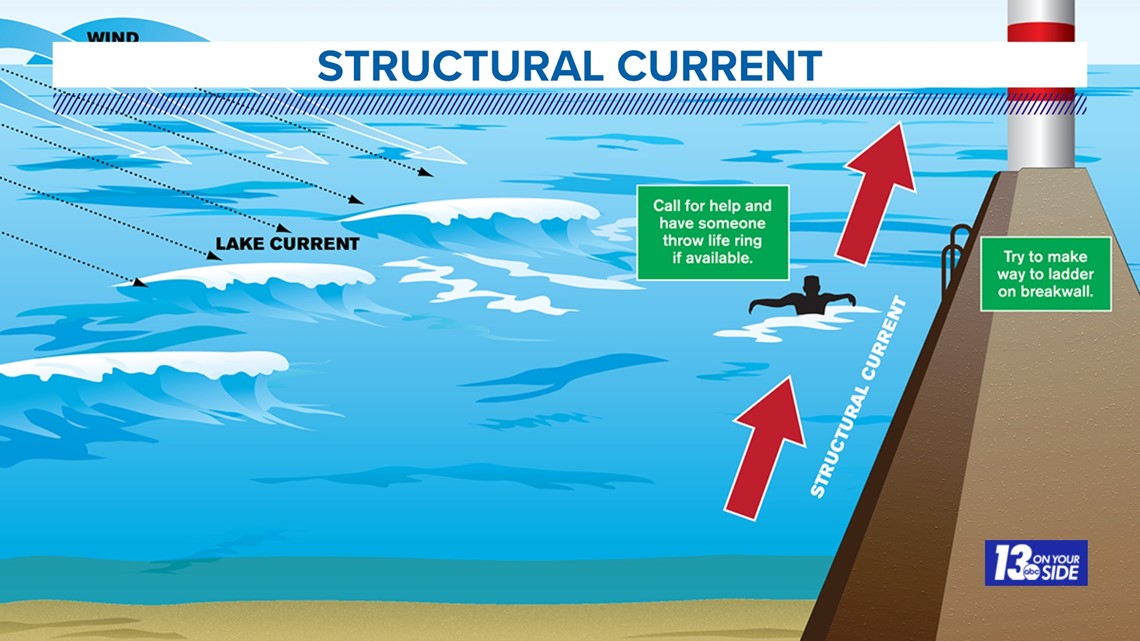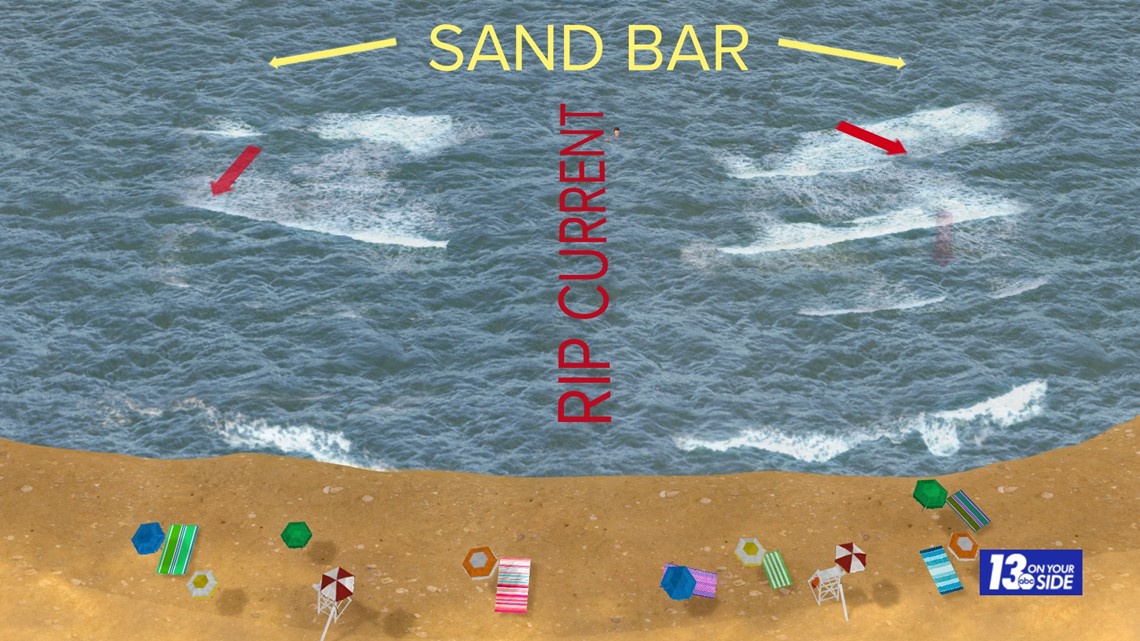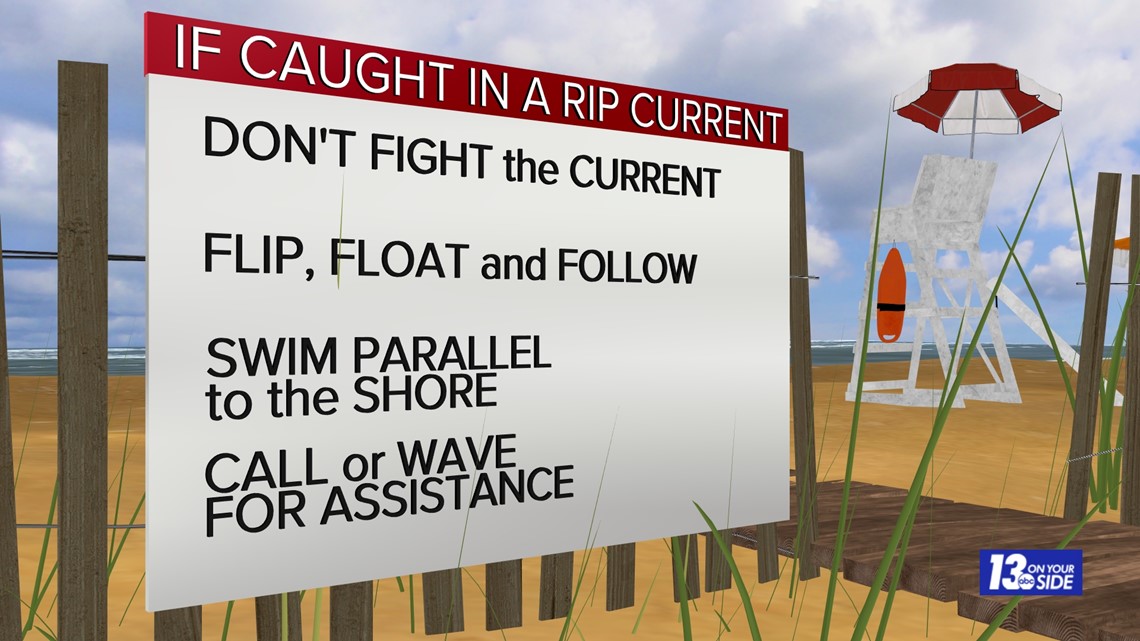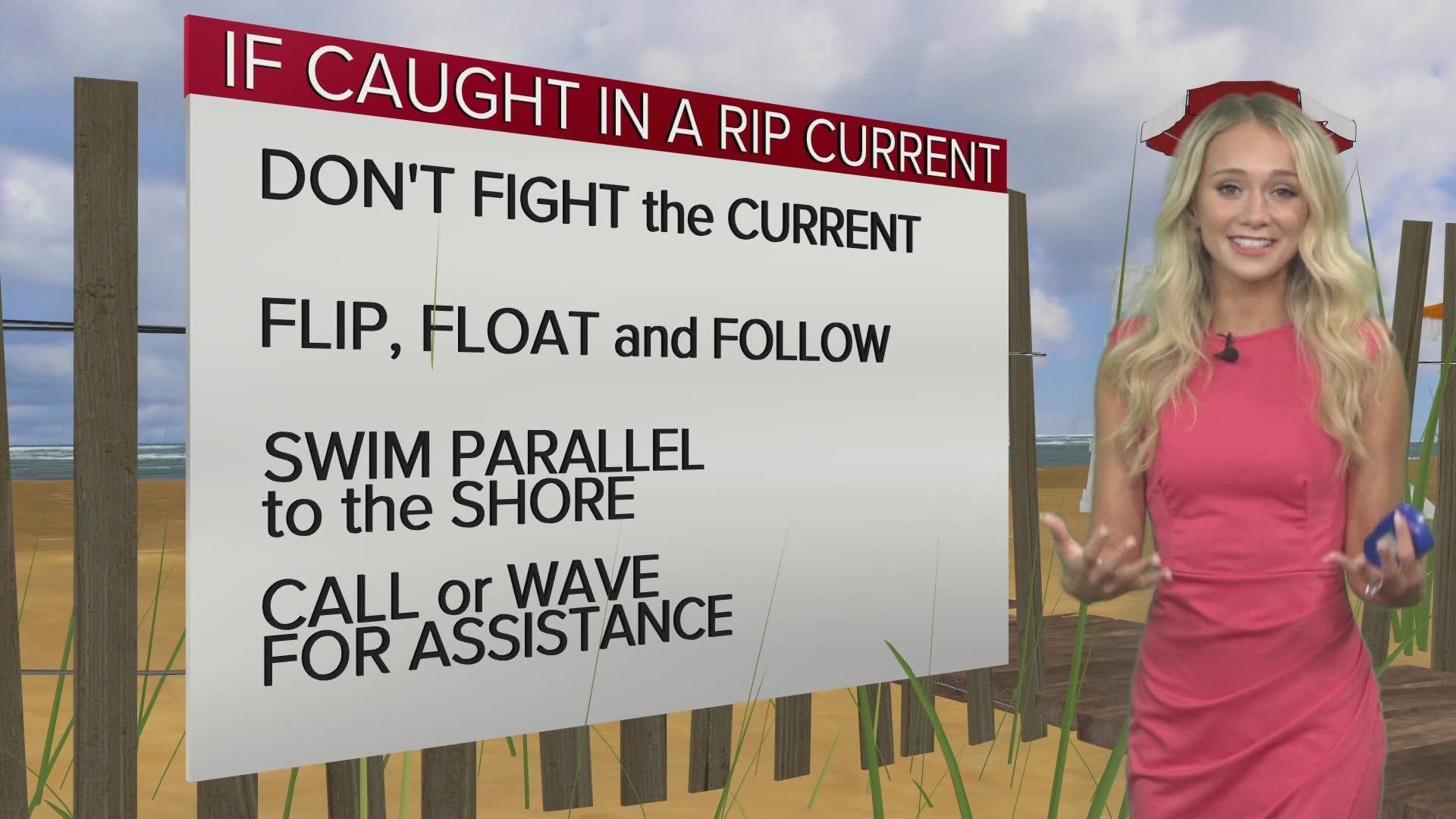LAKE, MICHIGAN, Mich. — Waves were again large and dangerous across Lake Michigan on Thursday afternoon, meaning water restrictions and red flags were flying over many West Michigan beaches.
While the dangers of these large waves is easy to see, it's actually the hidden currents that prove to be far more insidious. Trying to fight these currents can be nearly impossible, even for Olympic swimmers, so knowing what to do in different situations on the water can be absolutely crucial for survival.
Below we are going to explain three different types of dangerous currents, how to identify them, and how to escape.
Structural Currents:


These can be some of the most dangerous currents on high wave days. In addition to pushing you out to open water, they are also pushing you toward the pier or structure and sending water up over your head. It can at times feel like you are swimming in a washing machine.
The best prevention for these currents is to stay out of the water, off structures, and away from structures that stretch into the water when high waves are present. If you end up in the water call for help, try to get to a ladder, or seek a life ring thrown by someone onshore.
Due to the relatively few means for escape, these currents can easily become deadly.
Longshore Currents:


When winds are strong, longshore currents can form and can quickly sweep you down the beach from where you were in the water. If these currents come into contact with a pier or structure they can turn into the very dangerous structural currents.
To escape these currents simply swim toward the shore and exit the water.
Rip Currents:


Another tragically deadly current type is the rip current. These currents pull you away from the shoreline and out into open water. Fighting these currents by trying to swim back to shore can lead to exhaustion and potentially dire consequences.
To get out of these currents flip over, float on your back, and follow the flow of the current. Once you stop being pulled outward, or while still in the current, swim parallel to the shore until you exit the rip current. From here you can either swim back in or call/wave for assistance.


No matter what situation you find yourself in while in the water, if you feel you are in danger call and wave for help. If you think you can't handle this on your own, it is always better to get help sooner rather than later.
Finally, obey the warning flags, lights, and lifeguards. If the signs are telling you it is too dangerous to swim, they are doing this for a reason.
Stay safe out there West Michigan!
-- Meteorologist Michael Behrens
Follow me on social media! Facebook Meteorologist Michael Behrens, Twitter @MikeBehrensWX, and Instagram @MikeBehrensWX.
Email me at: MBehrens@13OnYourSide.com
Have a 30-second video or still photo to share? We'd love to share it with everyone! Email your image to Weather@13OnYourSide.com or post it to our 13OnYourSide Facebook Page.
►Make it easy to keep up to date with more stories like this. Download the 13 ON YOUR SIDE app now.
Have a news tip? Email news@13onyourside.com, visit our Facebook page or Twitter. Subscribe to our YouTube channel.

